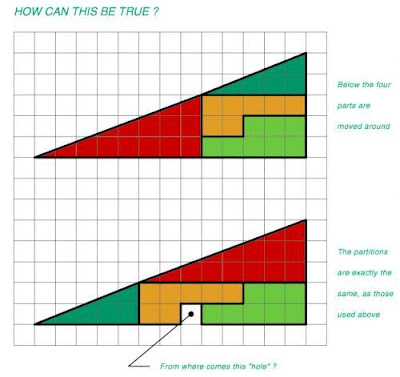A long time ago, in ancient Greece, one of the philosophers asked a simple yet very important question - is matter infinitely divisible? He of course formulated the question in a much more intuitive way: what will happen if you take a stick and break it in half, than take one of the halves and break it in half again and so on. Thinking about this problem, he concluded that at some point we will not be able to continue breaking the stick. According to him, after a finite amount of time we will reach an indivisible component of matter. He named this indivisible component "atom".
As with any new idea, there were those who believed in it and those who concluded that this idea is wrong. Likely for both sides, there were no means to actually check it so they could argue as much as they wanted.
Even though we are much more advanced today we still don't know the answer to this problem. Ironically we have discovered particles which we named atoms only to find out that they can be split apart as well only a few years later. Although, to be really precise, we need to remember that the problem can be formulated as the "atom" being the basic component of a specific type of mater. In other words, one possible understanding of the problem is that it asks to find a "part" that if divided further looses the recognizable properties of the object we started with. If we formulate the problem in this way, then there are indeed such "atoms" - molecules.
At this point you are probably wondering what is this about and how is it connected to infinity. To understand this lets look on a somewhat famous paradox - the Thomson lamp. Consider a lamp with a toggle switch. Flicking the switch once turns the lamp on. Another flick will turn the lamp off. Now suppose a being able to perform the following task: starting a timer, he turns the lamp on. At the end of one minute, he turns it off. At the end of another half minute, he turns it on again. At the end of another quarter of a minute, he turns it off. At the next eighth of a minute, he turns it on again, and he continues thus, flicking the switch each time after waiting exactly one-half the time he waited before flicking it previously. The sum of all these progressively smaller times is exactly two minutes.
So, in the end, is the lamp on or off?
It turns out that there is no clear answer to this problem. While we know the state of the lamp at any time during the process, we cannot tell what is the state at the end. Now lets return to our original problem. Lets suppose for a second that "atoms" don't exist. With this in mind we can take the being from the lamp paradox and instead of it toggling the switch we will make it break sticks in half. Since there are no atoms, the process doesn't end before two minutes pass. But what do we have after two minutes?
In this case it is rather simple to look on the problem mathematically. Lets substitute the stick for the line [0,1]. The whole process can be described then as just a limit of [0,2^(-n)] when n goes to infinity. The limit is a single point, so that would mean that we will get a "particle" with size and mass equaling zero. However, that would suggest that the matter is build from particles with zero mass, and this is a rather bizarre conclusion.
The only possible result we can get from this line of thought is that if such a being actually exists then there are "atoms". However, if there is no such being then we cannot say anything.
While I would like to finish this post with at least a partial solution to the problems I presented, there is no solution as far as I know. There is, however, a funny "solution" to the Thomson lamp paradox. Lets assign numbers to the states of the lamp - 1 and 0. If we do this then the state of the lamp after n steps is: 1-1+1-1+...+(-1)^n.
Therefore, if we take the limit when n goes to infinity, we will get the state of the lamp after two minutes. So lets see what the limit is.
2A=1
A=0.5













